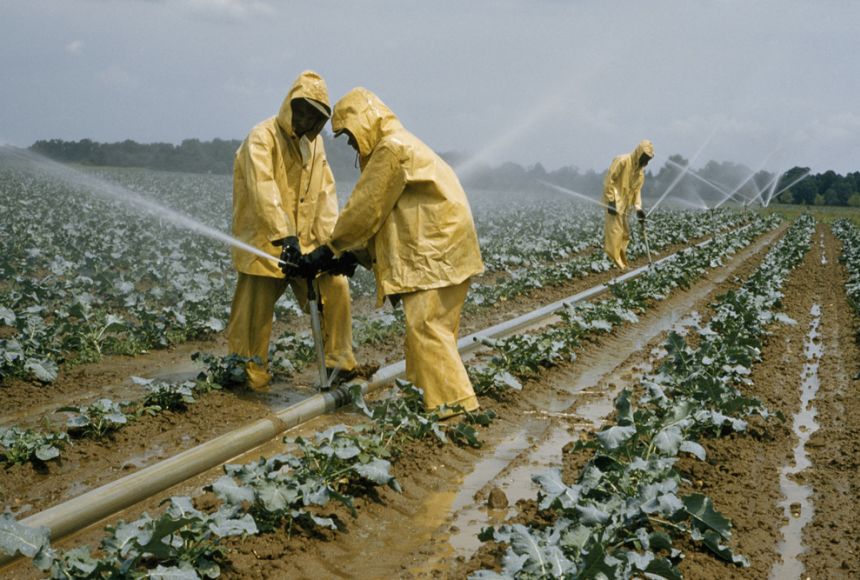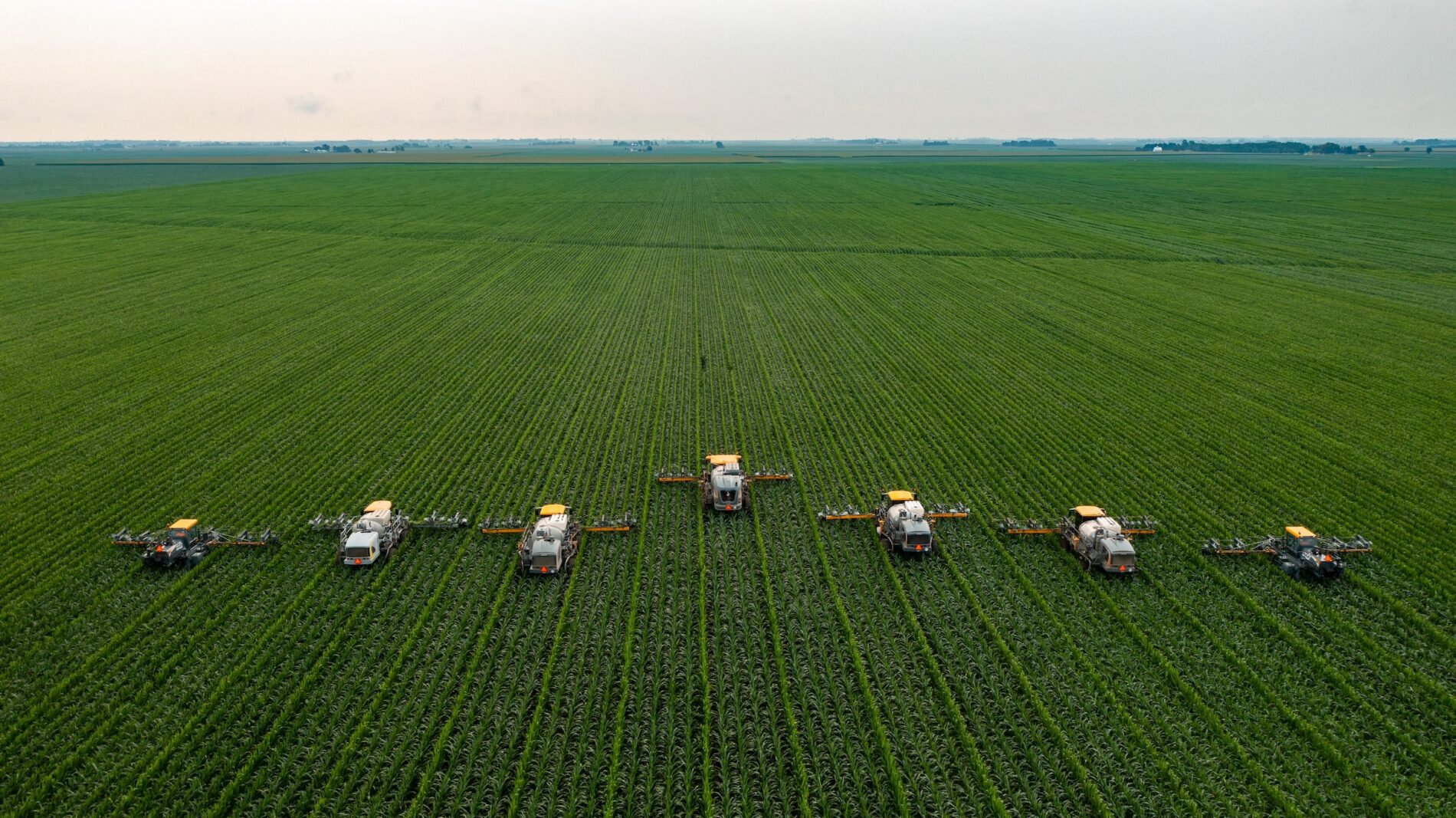Agriculture and Food Safety: Difficulties and Solutions
Wiki Article
Enhance Agricultural Productivity With High-Quality Water Soluble Polymers
These polymers offer a variety of benefits that can reinvent typical farming approaches, from enhancing water retention and efficiency to optimizing soil structure and nutrient distribution systems. By using the power of ingenious polymer solutions, farmers can potentially open new pathways towards accomplishing greater plant returns while reducing environmental impacts.
Advantages of Water-Soluble Polymers
Water-soluble polymers supply a plethora of benefits in farming applications as a result of their boosted water retention residential properties and ability to improve dirt structure. Agriculture. These polymers, when added to the dirt, can significantly boost water holding capacity, decreasing the regularity of irrigation called for by crops. By forming a gel-like material when blended with water, water-soluble polymers produce a reservoir that slowly releases wetness to plant roots, guaranteeing an extra constant supply of water throughout dry spellsFurthermore, these polymers assist in preventing dirt erosion by binding dirt bits together, thus improving dirt framework and stability. Improved soil framework enables for better root penetration and oygenation, promoting healthier plant development and higher plant yields. Water-soluble polymers likewise help in nutrient retention by minimizing leaching, making certain that essential nutrients continue to be available to plants for a longer duration.
Improved Water Retention and Effectiveness
Enhancing agricultural water retention and efficiency with the consolidation of innovative polymer technologies has become an extremely important focus in modern-day farming practices. Water-soluble polymers play a vital role in enhancing soil framework, boosting water infiltration, and decreasing water evaporation rates. By creating a thin movie on the soil surface area, these polymers aid to stop water drainage and boost the soil's water-holding ability, ensuring that plants have access to an adequate water system.Moreover, using top notch water-soluble polymers can significantly lower the frequency of watering, as they improve the dirt's ability to preserve moisture for longer durations. This not only preserves water but likewise minimizes the energy and labor costs related to irrigation practices. Additionally, enhanced water retention and performance result in better nutrient uptake by plants, causing improved crop returns and total farming performance.
Enhanced Nutrient Distribution Systems
Provided the substantial influence of high-quality water-soluble polymers on improving water retention and performance in agriculture, the focus currently shifts in the direction of optimizing nutrient distribution systems to additionally enhance plant growth and yield. Enhanced nutrient distribution systems play an important function in guaranteeing that plants get the necessary nutrients in a type that is conveniently available for uptake, promoting their overall health and productivity. By including water-soluble polymers right into nutrient shipment systems, the efficiency of nutrient uptake by plants can be significantly improved.One secret benefit of making use of high-grade water-soluble polymers in nutrient distribution systems is their ability to control the release of nutrients, guaranteeing a constant and controlled supply to plants over a prolonged period (Agriculture). This controlled release device assists prevent nutrient leaching and overflow, consequently taking full advantage of vitamins and mineral use by plants and lowering environmental effect

Soil Structure Optimization Techniques
Optimizing soil framework is paramount in contemporary agriculture for maximizing plant returns and promoting sustainable land administration techniques. Soil structure optimization methods play a critical role in making sure that soil offers an optimal environment for plant development. One crucial method is the addition of natural issue, such as garden compost or manure, which helps improve soil structure by boosting its water-holding capacity and nutrient retention.Additionally, exercising minimal husbandry or no-till farming can prevent soil compaction and promote the growth of a healthy dirt framework. Cover chopping is another efficient technique that involves planting crops particularly to enhance the soil and shield, preventing disintegration and improving dirt structure.
Additionally, carrying out crop rotation strategies can aid damage parasite and illness cycles, while also enhancing dirt framework with the differing root structures of various crops. In general, utilizing these navigate to this site dirt framework optimization techniques can result in raised agricultural productivity, reduced ecological influence, and long-term sustainability in farming methods.
Sustainable Solutions for Crop Yields

To resolve the obstacles of maximizing plant yields while promoting lasting land monitoring techniques, exploring sustainable services becomes necessary in modern farming. One sustainable option for boosting plant yields is the usage of precision farming methods.
In addition, advertising crop rotation and cover chopping can aid maintain dirt health and wellness, reduce erosion, and boost nutrient biking, inevitably adding to higher returns with time. Integrated bug monitoring methods also play an essential duty in sustainable crop manufacturing by reducing the dependence on chemical pesticides and promoting all-natural parasite control techniques.
Furthermore, buying research study and innovation for developing drought-resistant crop ranges and climate-resilient farming methods can aid reduce the influence of environment adjustment on farming while ensuring consistent yields when faced with ecological difficulties. By adopting these sustainable solutions, farmers can accomplish higher plant yields while protecting the health of the land for future generations.
Verdict
In final thought, making use of premium water-soluble polymers in agriculture offers various advantages such as improved water retention, enhanced nutrient delivery systems, and optimized soil structure. By carrying out sustainable solutions for crop returns, farmers can dramatically enhance farming performance and effectiveness. Agriculture. Water-soluble polymers provide a economical and ecologically pleasant approach to enhance the total performance of farming methods, bring about far better outcomes for both farmers and the settingThese polymers offer a variety of advantages that can transform standard farming techniques, from boosting water retention and efficiency to enhancing dirt structure and nutrient distribution systems.Additionally, these polymers assist in protecting against dirt disintegration by binding soil bits together, therefore enhancing soil framework and security. By creating a thin film on the dirt surface click to read more area, these polymers assist to protect against water overflow and increase the soil's water-holding ability, making sure that plants have accessibility to an adequate water supply.
Dirt framework optimization techniques play an essential role in guaranteeing that dirt offers an optimal environment for plant development.In useful link verdict, the use of high-grade water-soluble polymers in farming provides many benefits such as improved water retention, boosted nutrient delivery systems, and maximized dirt framework.
Report this wiki page